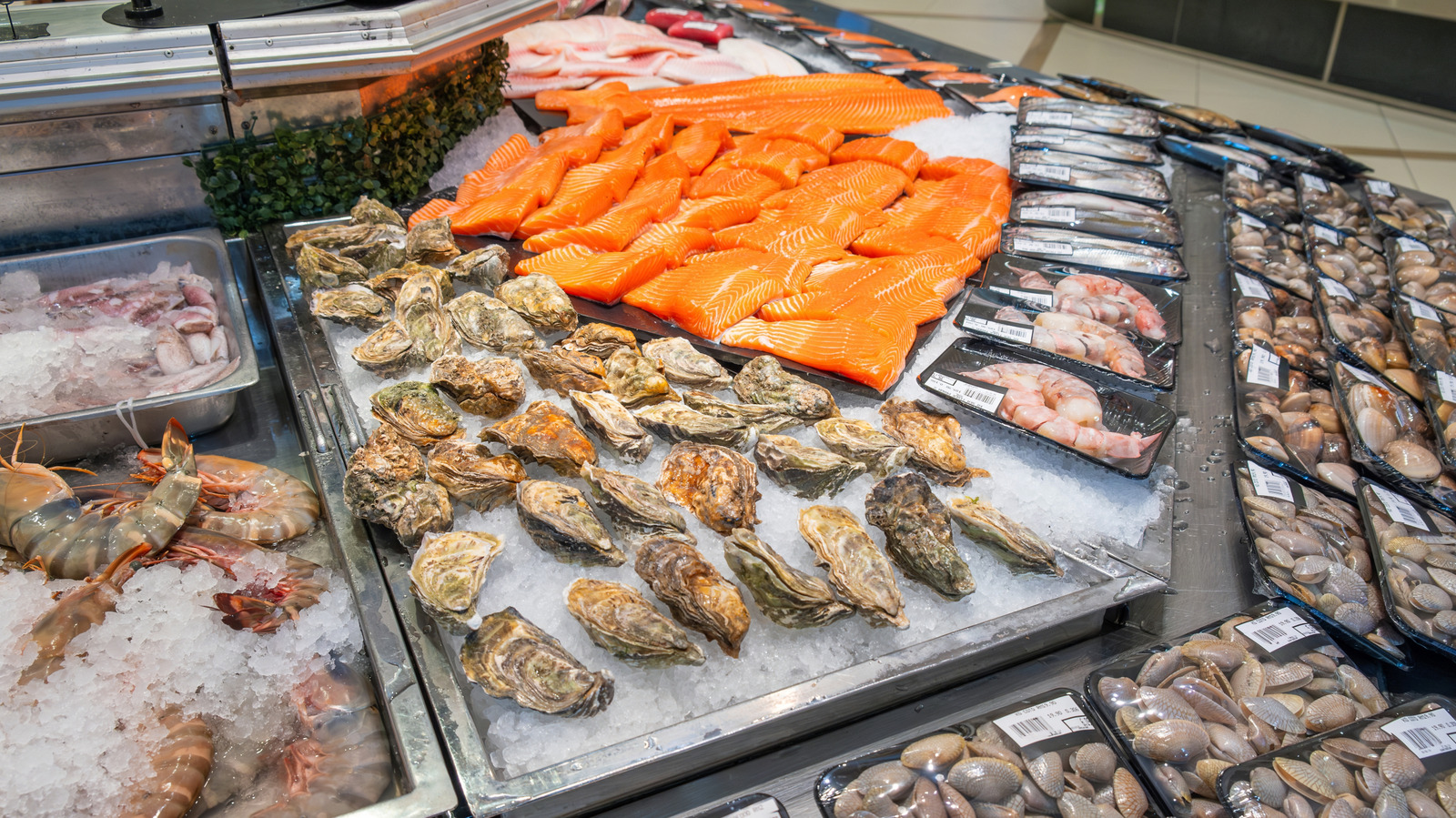If you’re sourcing fresh fish at the grocery store, you may have questions about whether it’s the best, freshest seafood you can buy. You might also wonder if there are any tricks to choosing the highest-quality fish. When we talked to Robert DiGregorio, the director of seafood quality at Fulton Fish Market, he offered tips on what to consider when shopping for fresh fish. Turns out, it’s often just in the timing.
Grocery stores stock fish to be sold when it is busiest, according to DiGregorio. Of course, this might make it more difficult, or possibly less convenient, to buy it on some days. “Since supermarkets are busier the second half of the week, especially weekends, that might be when they get most of their new product in,” DiGregorio says. The catch might not be as high quality if it’s been sitting for a few days, which may be the case if you’re shopping earlier in the week.
When choosing fish, there are signs that might help you decide on what to buy. Though fishmongers aren’t always readily available to talk at grocery stores, if you are lucky enough to find one free at the fish counter, DiGregorio recommends asking to see the fish up close, or even smell or touch it if allowed. “Generally speaking, whole fish should have clear eyes, red gills and not look dried up,” he says. “Fillets should be translucent and moist, not dull looking and separating at the seams.” Customers should look for signs that fish has gone bad as well, such as an ammonia smell, bruising, or gray flesh. You can also ask the fishmonger about the catch date, when it came in, and when and where the fillets were cut. If the answers aren’t to your liking, it might be better to get frozen fish.
Tips for selecting and cooking great seafood at home
Though it can be challenging to prepare fresh seafood, there are skills to master that will help you cook fish, and Robert DiGregorio offered a few tips in that department, too. One way to get started is by cooking the easiest kinds first, such as shrimp, scallops, and fish fillets. “These items cook quickly and with minimum prep,” he says. If you’re shopping for fish on an off day, you might be better off buying frozen seafood, which can add to your prep time a bit. However, frozen options are generally just as nutritious as fresh ones, though there is some moisture loss when frozen fish is thawed, which can reduce some of the vitamin and mineral content.
Plenty of recipes exist for seafood, but simply preparing fish fillets or shellfish in a skillet with lemon, butter, and herbs is always a wonderful option, especially for beginners, according to DiGregorio. There are likewise many ways to make scallops, such as searing or baking. You can even eat scallops raw when they are labeled as sushi-grade. If you are heating them up, there are some things to avoid, as scallops are best when they are cooked quickly (just about a minute per side on medium-high heat). When buying the shellfish, DiGregorio says to look for shells that are tightly closed; for lobster and crabs, he notes that purchasing them live is also important.
All of the potentially brilliant seafood dishes you can make rely on good-quality fish. If you’re going to buy it fresh, regardless of the day you head to the store, DiGregorio emphasizes the importance of buying seafood from companies that have a great reputation and ample experience.






